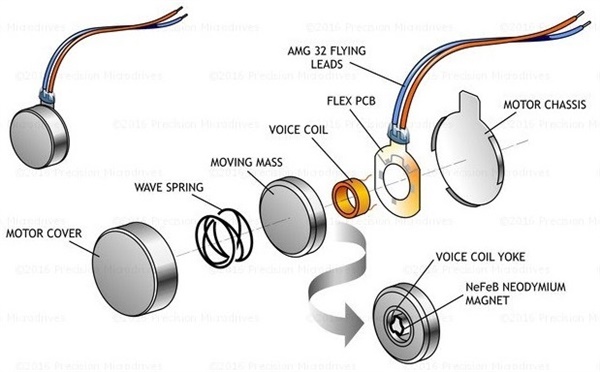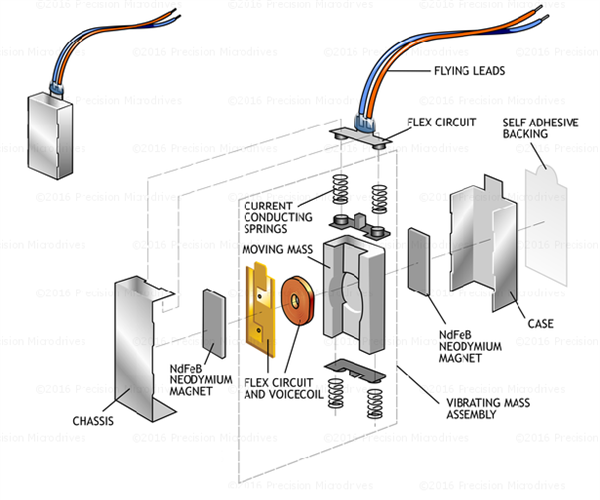SSZT914 october 2017 TAS2557 , TAS2560
What do mobile phones, smart watches and portable electronics have in common? They’re all designed to help users interact with the digital world. A consumer’s primary interaction with electronics occurs via visual feedback, but the importance of tactile or haptic feedback is growing. Quality haptic feedback enhances the user experience and device perception. Customizing haptic effects can make it easy to recognize the difference between incoming work emails and a personal phone call, or create a more immersive experience while using apps, playing games or watching movies.
The main challenge engineers are trying to solve today is how to achieve higher performance in haptic solutions. This challenge requires two things, advanced actuators and high-voltage drivers. Actuator vendors have developed new technology called x-axis linear resonant actuators (LRAs), enabling higher acceleration that yields higher performance.
For some background, if you tear down most of today’s phones, you’ll find a circular LRA embedded into one of the corners. Figure 1 shows the typical z-axis LRA that currently dominates the market.
 Figure 1 Z-axis LRA (Photo Courtesy
Precision Microdrives)
Figure 1 Z-axis LRA (Photo Courtesy
Precision Microdrives)As phones get thinner, the height restriction for these circular LRAs is shrinking, reducing the maximum available acceleration. Therefore, the next generation of LRAs are being designed to move in the x-axis direction, as shown in Figure 2.
 Figure 2 X-axis LRA (Photo Courtesy
Precision Microdrives)
Figure 2 X-axis LRA (Photo Courtesy
Precision Microdrives)The advantages of an x-axis LRA over a z-axis LRA go beyond just form factor. X-axis LRAs deliver vibration feedback more directly to the palm of the hand. Typically, users grasp the sides of the phone with their palm and fingers. X-axis LRAs apply force to the sides of the phone and therefore deliver acceleration more directly to the user’s hand. The acceleration of this vibration is also more consistent across the surface of the phone. Overall, this creates a more distinguished or clear haptic effect when the phone reacts to a touch event.
In order to successfully drive x-axis LRAs, designers also need a higher output drive voltage than the voltage of the battery. A haptic driver with an integrated boost converter is a great solution to drive this higher voltage to the LRA. As these new high-voltage LRAs enter the market, TI has a dedicated team working on our next-generation haptic drivers, which include the TAS2560 and TAS2557 devices. These drivers integrate high-efficiency boost converters, waveform storage and other key features for haptic feedback. Stay tuned for my next blog post, where I will reveal more information about how to implement the next generation haptic drivers into your system.
Additional Resources
- Learn more about TI’s haptic solutions for eccentric rotating mass (ERM) and LRA actuators.
- See TI’s complete portfolio of solutions for touch technology.